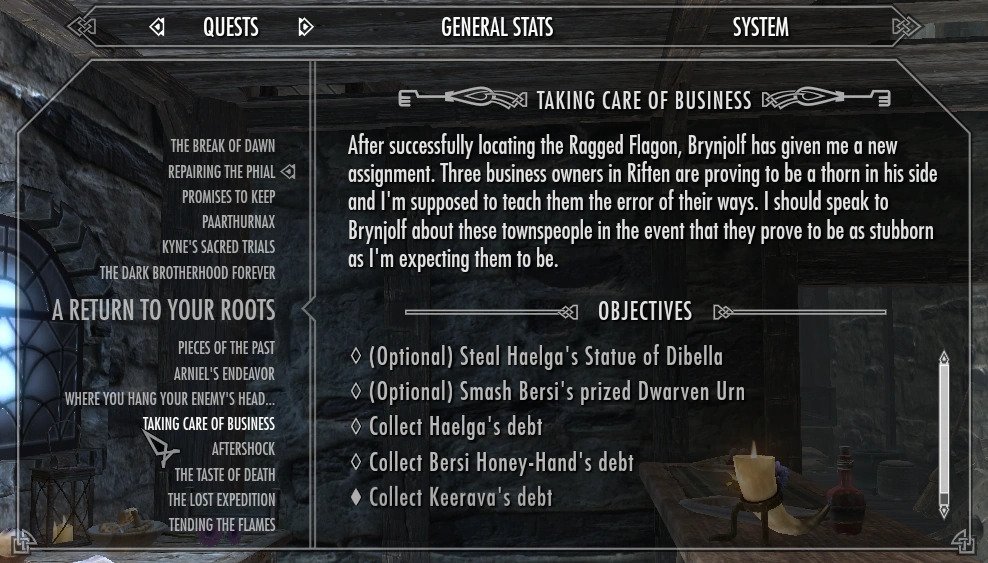Story Highlights
- New generative AI tools like ChatGPT and Midjourney have taken the world by storm.
- These tools will certainly impact the process of game development in the future.
- Controversy exists over the use of AI-generated content in video games.
2023 has seen the proliferation of new AI tools such as OpenAI’s ChatGPT and Midjourney Inc.’s AI photo generator tool. Their impact has been widespread. From people using AI prompts to create websites from a picture to passing some of the hardest exams in the world, these tools have already changed the lives of many around the world.
Now, AI is nothing new to the gaming industry, where it has been in use in game development for decades. Artificial Intelligence has been used in game design since the very start of gaming in the 1950s. Of course, these systems were simple and crude. AI would become an integral part of game development in the 1970s. Games like Pacman use Artificial Intelligence.
During the 80s and after, AI became a necessary tool for game development. AI could be used for making real-time decisions, engaging in different tactics from learning from a player, and more. In modern gaming, AI is everywhere. NPCs in video games are simply artificial intelligence. How NPCs respond to player actions and their environment is another work of AI, one of the most basic features of games.
AI has been in use in game development for decades, but there is a difference between this type of AI and generative AI systems like ChatGPT and Midjourney. These new generative systems have taken the world by storm and could potentially change the industry altogether. Prior, AI was used to make things easier for game development and to automate many processes.
ChatGPT has been used to replicate human-like interaction with a model trained on a massive dataset, capable of generating code from a prompt or an entire website from a photo of writing on a napkin. Midjourney V5 can create photorealistic images from a prompt. There are other newer tools besides these, and their impact on game development will be monumental.
Generated Quests

Netease was the first video game publisher to announce a ChatGPT-like system in an upcoming game to generate new quests and NPC reactions to player decisions. In a demo for the MMO game Justice Online Mobile, Netease demonstrated the capabilities of the technology. In one example, you could tell an NPC their house was on fire, and they would run back to their home to check.
Netease is not the only publisher exploring this technology. Ubisoft recently announced they are developing a similar tool to generate in-game dialogue through a tool the company calls Ghostwriter. Unlike ChatGPT and Netease’s technology, Ubisoft‘s Ghostwriter is more of a tool to aid writers during game development rather than in-game generative systems.

These types of AI systems will make your game much more dynamic. Even with the most intricate open-world games with branching paths, you are still limited to the boundaries that a developer has made. Generative AI may be able to build a truly customized, interactive world that truly responds to your inputs and decisions. Extreme personalization such as this will add a touch to open-world games that never existed.
These tools can be used to create procedurally generated quests. Games like Skyrim have quests that are repetitive, such as the Thieves Guild side quests where you have to change a ledger, steal an item, etc. AI could make these quests much more personalized, with individualized repercussions and reactions from other NPCs who were affected by actions you take during a quest.
One modder has even used ChatGPT to create brand-new quests in Skyrim. For a game developer, these tools can make your game truly infinite; completely unique interactions and quests mean that players can be much more engaged in a game. A personalized AI-generated quest system ensures that a gamer will have a unique experience every playthrough.
AI-Generated Voices And Audio
You likely have seen many AI voiceover videos on TikTok recently. Videos of Joe Biden playing Elden Ring and Minecraft with Trump, Obama, and Queen Elizabeth have trended in recent weeks. Generative voice AI has existed for a long time, but these videos have become a type of audible uncanny valley. Newer AI models have seemed to not only perfectly replicate voices but add expressions to voices as well.
Combining this technology with AI-generated quests, there would be no shortage of potential quests and branching paths in a game if NPCs could respond to you with generated text overlayed with generated voices to go with it. There are, of course, some ethical concerns with this. A voice actor may not want some AI to generate audio that is a replica of their voice.
There is also the potential to use these tools to generate other types of in-game audio, such as environmental noises. Weapon sounds, animals, and all sorts of 2D and 3D audio have the potential to be generated by artificial intelligence. Using AI for voices is not new. Obsidian has used AI-generated voices and audio in its games for years.

Quick Concept Art

Generative image models such as DALL-E, Midjourney, and Stable Diffusion have been used to create images from prompts. The newest versions of these models have been able to create images of different art styles and levels of realism. From AI-generated sketches that look like scribbling on paper to photorealistic images that would fool you at first sight, game developers could use these tools to create concept art.
Some Twitter users have demonstrated the possibilities of using generative artificial intelligence to create video game concept art.
Midjourney v5 just came out this week and its scary.
I tried out a few prompts to see how it handles concept art… and yeah AI is definitely going to take over a lot of jobs.
these are some wild results pic.twitter.com/HVuQIyc2wz— Thip (@Thip_dzn) March 18, 2023
By generating concept art through a prompt, a designer could quickly visualize what their game could look like or use these tools to generate new ideas for world or character design. This technology is not without controversy, though. Artists and designers have backlashed against the rise of AI-generated “art” and images.
Some companies are even banning the use of artificial intelligence to create concept art for games. According to concept artist Trent Kaniuga, who has worked on Fortnite, Diablo III, Overwatch, and more, many of their old clients have banned the use of generative AI to make concept art. We can assume that one of these clients includes Activision Blizzard, where Trent has worked for.
AI art is now BANNED by many major game dev studios due to “possible legal copyright issues”. Many old clients are amending contracts recently to end the use of AI art. This goes in line with what I’d predicted in several of my first videos on the subject.
— Trent Kaniuga Art (@TrentKaniuga) March 27, 2023
Midjourney is currently being sued in a class action lawsuit alleging their models were trained on copyrighted images. These models are taught what so and so looks like, so if you were to ask it to make an image of a duck, it knows what a duck looks like because of the many pictures of ducks it was trained on. It is alleged that Midjourney is trained on billions of copyrighted photos.
Generated Models And Items

Like concept art, developers are able to generate item models from a prompt. These models could range from game and item icons to 3D models of in-game items. For a small developer, these tools would make the process of modeling and creating these objects much easier and they could spend time working on other parts of game development.
Like AI-generated concept art, generated item models are not without controversy. The same arguments and concerns over these models using copyrighted images. It is likely some major publishers and studios will refrain from using AI to generate these types of in-game items. However, for a small indie developer, such tools could be crucial.
Quicker Game Development Cycles
The modern AAA game has a development cycle lasting six years or more. Video games that are being made for the current generation of consoles likely will not release until the next generation are out. AI tools are used in game development, such as the procedural generation of things like environments and dungeons. One good example is Oblivion, where all dungeons were procedurally generated.
Modern generative tools have the potential to speed up development. Let’s take voice acting, for example. Instead of recording thousands of lines of dialogue, you could train a model on an actor’s voice and then input a script, outputting generated dialogue.
The reality is many studios, even small indie studios, are feeling the crunch from long development cycles. Some generative AI tools can help shorten the length of game development. How much longer a development cycle can be shortened is project-specific, but gone are the days when some of the top games were made in 2-3 year cycles.
Fun fact: Video game production cycles have gotten so long that if a big-budget game studio started working on a brand new project today, it would likely be for the PlayStation 6
— Jason Schreier (@jasonschreier) January 2, 2023
While fancy machine learning systems have wowed many by creating photorealistic works, game development is a very long process, and there are many steps that go into developing a game. Multiple teams are working very closely with each other, and a successful game is run like a well-oiled machine. The impact of generative AI on game development may tend to be overstated by some, but it will be a useful tool for many.
Impact On Content Creators
Content creators, such as YouTubers and Twitch streamers, can much to gain much from new AI tools. There is no shortage of new AI-based video editing software, which could cut down the time it takes to edit a video. Synthetic voice AI and ChatGPT-generated scripts could allow creators to generate almost all aspects of a video.
Using AI to assist in video editing could allow a streamer to have more time to do other things, assuming they are not outsourcing video editing as many do. AI can also be used to help content creators be further engaged with their audiences. Nivida unveiled a new AI feature called “eye contact” as part of its live-streaming tool Broadcast. This tool edits a live streamer’s eyes to make it seem like they are always looking at the camera.

Limitations of AI in Game Development
While AI in game development can seem promising, the reality is many studios use proprietary systems for things like quest design, NPC behaviors, and text systems. Implementing these generative AIs would mean completely replacing these entire systems, which are some of the most important parts of a game engine. That is no easy task (unless Unreal Engine comes out with some AI plugin).
Simply put, implementing a ChatGPT-like system in a game is no easy task. Training NPCs to be able to give generated dialogue is a whole other task. How do you ensure that generated text and dialogue fit within the molds of a game? Procedural generation has existed in gaming for decades but still needs human supervision, says Wired.
Final Thoughts
New generative AI tools have taken the world by storm, generating intense hype on the internet. However, it seems like these tools are too overhyped. Yes, ChatGPT is a nice novelty to have, but the next big Bethesda RPG won’t be made, written, and designed by a generative model. It will be made by people.
Sure, it’s nice to be able to draw up some concept art from a prompt or use ChatGPT to think up a script. There is a lot of potential for generative AI to make a massive impact on game development. However, it will be some time before these types of machine-learning models are mature enough to be used in AAA game development.
It seems like the capabilities of generative AI are being overhyped by the same types of internet sleuths who were overhyped about Web 3.0 and the Metaverse, promising that these things would change the world forever. We are still a long way from seeing the true impacts of generative models, and it will be a few years before we see any ChatGPT-like system used in a game.
However, there is space for these systems to be used in game development. Think of the difference between Midjourney V1 and V5, and the difference is night and day. As these models become more advanced, their use case in gaming increases. Large AAA studios are experimenting with the technology, and someday generative AI will be commonplace in gaming.
Thanks! Do share your feedback with us. ⚡
How can we make this post better? Your help would be appreciated. ✍



